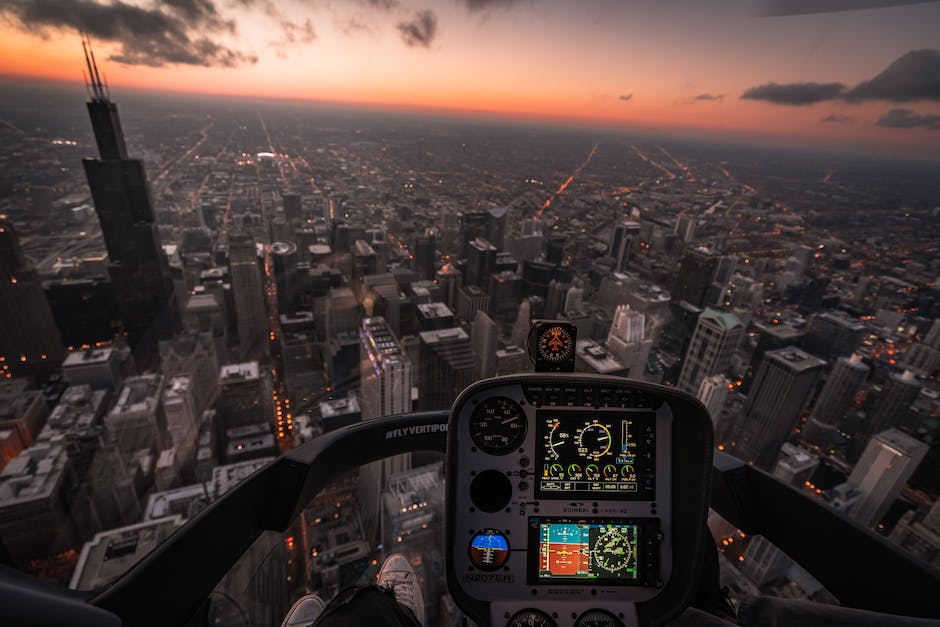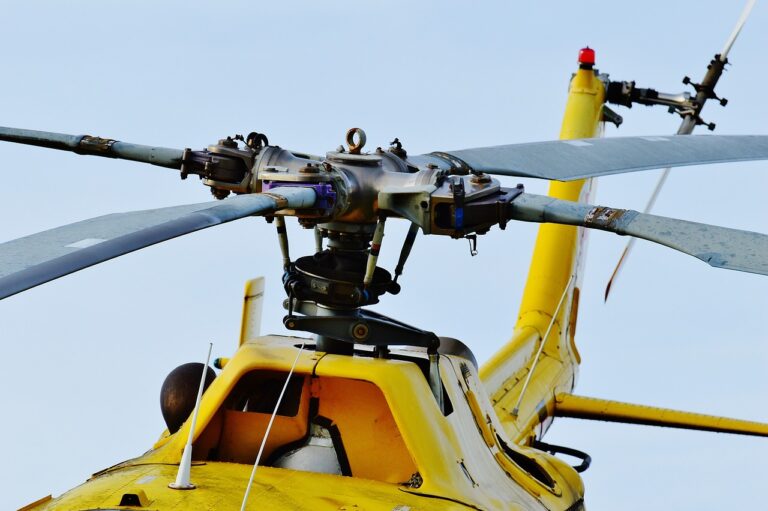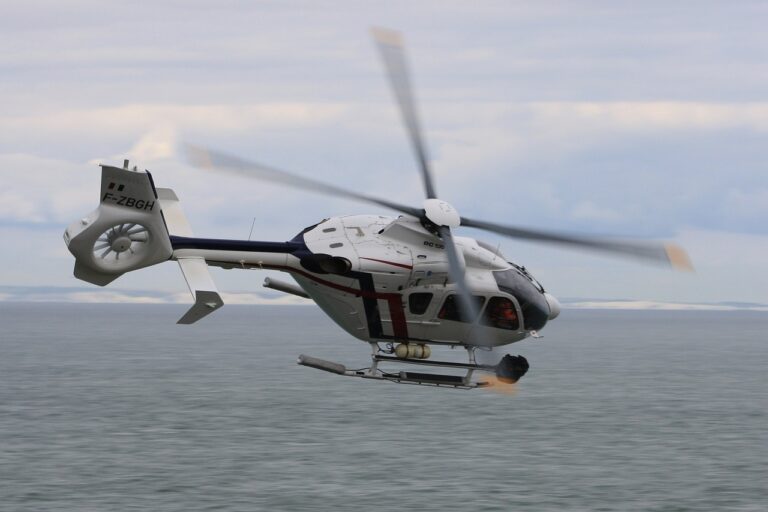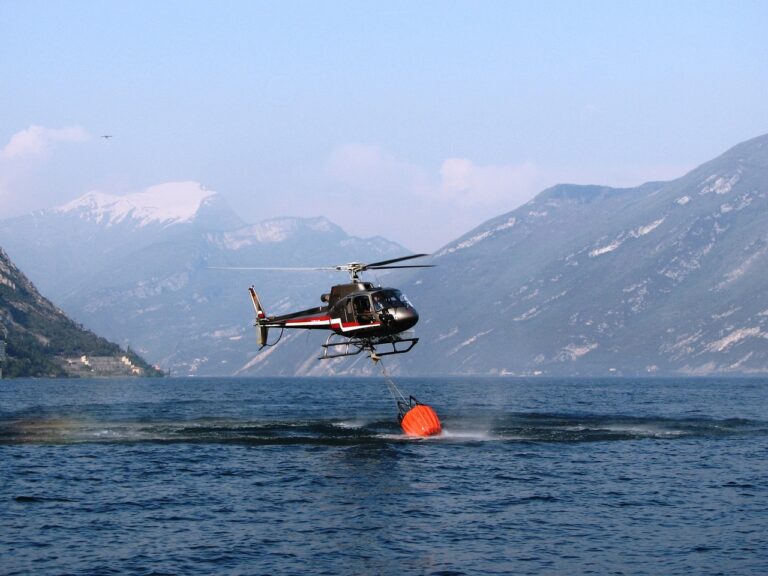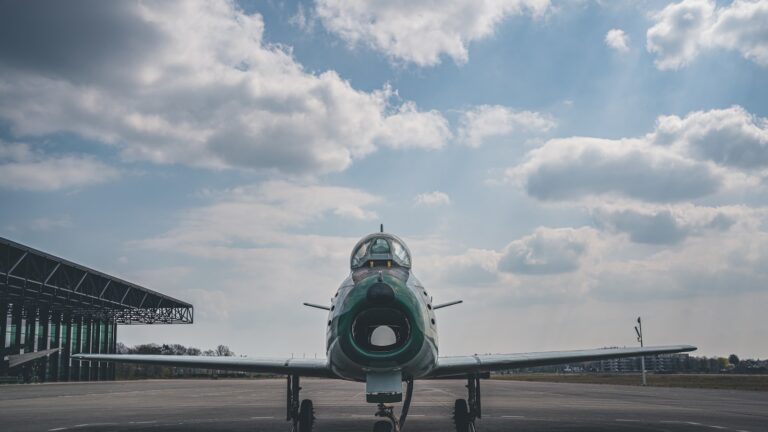Can You Fly a Helicopter Internationally
Flying high above the world in a helicopter is an exhilarating experience for many aviation enthusiasts. As the powerful rotor blades slice through the air, the thrill of exploration beckons beyond borders. But before embarking on an international helicopter adventure, one must contemplate the feasibility of such a venture. In this article, we delver straight into the heart of the matter: Can you fly a helicopter internationally? Let’s settle in for an impartial exploration of this captivating question without any frills or distractions.
Table of Contents
- Understanding International Regulations for Helicopter Flights
- Navigating the Complexities of International Aviation Laws
- Challenges and Considerations for International Helicopter Operations
- Key Factors to Consider when Flying a Helicopter Internationally
- Guidelines and Best Practices for International Helicopter Pilots
- Ensuring Safety and Compliance in International Helicopter Flights
- FAQs
- Insights and Conclusions
Understanding International Regulations for Helicopter Flights
Helicopter flights are subject to a set of international regulations to ensure safety and compliance with standards across borders. These regulations are put in place to establish a uniform framework for operations and to promote aviation safety worldwide. Understanding these regulations is crucial for anyone involved in the helicopter industry, from pilots to maintenance personnel and operators. Here are some key points to consider when it comes to international regulations for helicopter flights.
1. ICAO Standards: The International Civil Aviation Organization (ICAO) sets the global standards for helicopter operations. These standards cover various aspects, including airworthiness, flight operations, navigation, and communication. They provide guidelines and best practices for all countries to adhere to, ensuring a consistent level of safety.
2. National Regulations: While ICAO sets the overall framework, individual countries may have additional regulations specific to their region. These regulations may take into account factors like local geography, air traffic density, and meteorological conditions. Pilots and operators must be familiar with both ICAO standards and the specific regulations of the countries they will be flying in.
3. Airworthiness Requirements: Helicopters must meet certain airworthiness requirements, including regular inspections and maintenance. These requirements help ensure that helicopters are in a safe and operable condition before each flight.
4. Flight Planning and Documentation: Proper flight planning and documentation are essential for helicopter flights. This includes pre-flight planning, route selection, weather considerations, and filing the necessary flight plans. It is also important to maintain detailed records of each flight for auditing and safety purposes.
5. Emergency Procedures: International regulations outline emergency procedures that helicopter operators and pilots must be prepared to follow. These procedures include protocols for emergency landings, fire control, medical emergencies, and disaster response. Having a comprehensive understanding of these procedures is crucial for ensuring the safety of both crew and passengers.
By adhering to these international regulations, the global helicopter industry can maintain a high level of safety and standardization. Pilots, operators, and maintenance personnel must continually stay updated on any changes or updates to these regulations to ensure compliance and promote safe operations.
Navigating the Complexities of International Aviation Laws
In the vast and intricate realm of international aviation, navigating through the complexities of aviation laws can be a daunting task. These laws govern various aspects of air travel, including safety regulations, airport management, airline operations, and more. Understanding and complying with these laws is crucial for aviation industry professionals to ensure the safety of passengers and the smooth functioning of this global network. Here, we explore some key areas within international aviation laws and shed light on how they impact the industry.
1. Air Traffic Rights: International aviation laws govern the granting and regulation of air traffic rights, which determine a country’s authority to allow foreign airlines to operate within its borders. These rights play a pivotal role in facilitating international air travel and promoting healthy competition among airlines.
2. Aviation Safety Standards: Safety is paramount in the aviation industry, and international aviation laws establish a framework for harmonized safety regulations, standards, and practices. These regulations encompass stringent aircraft certification processes, pilot training requirements, air traffic control protocols, and regular safety audits to ensure a consistent and reliable level of safety across the globe.
3. Security Measures: International aviation laws also address security concerns to protect passengers, crew, and airport infrastructure from potential threats. These laws mandate rigorous security screening procedures, the implementation of advanced technologies, and the collaboration between airports and law enforcement agencies to combat terrorism and other security risks.
4. Environmental Regulations: As concerns about climate change grow, international aviation laws are increasingly focusing on reducing the industry’s impact on the environment. These regulations encourage sustainable practices, such as fuel-efficient aircraft designs, emissions reduction targets, and carbon offset programs, to mitigate the industry’s carbon footprint.
5. Consumer Protection: International aviation laws lay down guidelines for passenger rights and protections, ensuring fair treatment and compensation in case of flight disruptions, baggage mishandling, or other inconveniences. These regulations foster trust in air travel and promote accountability among airlines.
Comprehending and keeping abreast with the complexities of international aviation laws is a fundamental responsibility for aviation industry stakeholders. By navigating this intricate legal landscape, the industry thrives in promoting safe, secure, and sustainable air travel while safeguarding the rights and interests of passengers.
Challenges and Considerations for International Helicopter Operations
Helicopter operators venturing into international territory must confront a myriad of challenges and considerations to ensure smooth operations. One major hurdle revolves around navigating through complex regulatory frameworks imposed by different countries. Each nation enforces its own set of rules, regulations, and certifications, making it imperative for operators to meticulously research and comply with the specific requirements of each destination. Failure to adhere to these regulations can result in costly fines, legal repercussions, and even grounding of operations.
Additionally, language barriers pose another considerable challenge. Effective communication is crucial for safe and efficient helicopter operations. However, operating in foreign countries means encountering diverse languages and cultures, which can impede effective collaboration with local authorities, air traffic controllers, and ground personnel. Establishing reliable lines of communication and ensuring that all personnel involved are fluent in a common aviation English is essential to overcoming this obstacle.
Furthermore, logistical concerns demand careful planning and coordination in international helicopter operations. This includes arranging customs and immigration procedures, identifying suitable refueling points, and securing adequate hangar space. It is essential to develop robust contingency plans to address unforeseen events, such as adverse weather conditions, technical issues, or unanticipated regulatory changes, which can significantly impact flight schedules and operational efficiency.
In summary, helicopter operators must confront the challenges of navigating complex regulations, overcoming language barriers, and managing logistical considerations when engaging in international operations. By acknowledging and proactively addressing these areas, operators can enhance safety, minimize disruptions, and facilitate successful helicopter operations worldwide.
Key Factors to Consider when Flying a Helicopter Internationally
When it comes to flying a helicopter internationally, there are several key factors that should be taken into consideration. First and foremost, it is crucial to ensure that all necessary documentation and permits are in order. This includes obtaining the appropriate international licenses and adhering to the regulations and requirements of each country you plan to fly through or to.
Another important aspect to consider is the weather conditions and climate of your destination. Different regions of the world may have varying weather patterns and flight environments, so it is essential to be well-prepared and equipped for any potential challenges that may arise. This may involve conducting thorough research, consulting with local experts, and equipping the helicopter with the necessary instruments and equipment to navigate safely in different weather conditions.
Furthermore, it is imperative to have a comprehensive understanding of the local airspace regulations and air traffic control procedures in the countries you will be flying through. This includes being familiar with any restricted or prohibited airspace areas, understanding the requirements for flight plans and radio communications, and being aware of any unique procedures or practices that may differ from your home country. It is crucial to maintain open communication with the relevant aviation authorities to ensure compliance and safe passage throughout your international helicopter journey.
In summary, flying a helicopter internationally requires careful consideration of documentation, permits, weather conditions, and airspace regulations. By being prepared and knowledgeable about these key factors, you can ensure a safe and successful journey as you navigate the skies across different countries.
Guidelines and Best Practices for International Helicopter Pilots
When it comes to navigating the skies as an international helicopter pilot, it is crucial to adhere to a set of guidelines and best practices that ensure safety and optimal performance. Whether you are a seasoned pilot or just starting your journey, these recommendations will serve as a valuable resource to enhance your skills and ensure efficient operations.
First and foremost, staying up to date with the regulatory requirements of each country you intend to fly in is imperative. Familiarize yourself with the aviation authorities, local laws, and any specific procedures or restrictions that may be in place. This knowledge will enable seamless integration into different airspace environments and prevent any inadvertent violations. Additionally, maintaining effective communication with air traffic control and fellow pilots is paramount. Utilize standardized phraseology, speak clearly, and actively listen to ensure accurate exchange of information. Furthermore, being aware of cultural differences while communicating can enhance professionalism and establish a harmonious rapport with ground personnel.
Ensuring Safety and Compliance in International Helicopter Flights
When it comes to international helicopter flights, ensuring safety and compliance is of utmost importance. We prioritize the well-being of passengers and crew by implementing rigorous safety measures and adhering to international regulations. Our commitment to safety starts with our highly trained pilots and crew members who undergo regular training and certification to ensure they possess the skills and knowledge necessary to handle any situation that might arise during a flight.
To maintain the highest level of safety, we conduct thorough pre-flight inspections, including detailed checks of the aircraft’s systems and equipment. We also carefully monitor weather conditions and engage in robust communication with air traffic control to make informed decisions regarding each flight. In addition, we have implemented a comprehensive maintenance program that includes routine inspections and timely repairs to ensure that our helicopters are in optimal condition at all times.
Compliance with international regulations is another crucial aspect of our operations. We closely follow the guidelines set forth by international aviation authorities, such as the International Civil Aviation Organization (ICAO), to ensure that our flights meet the required standards for equipment, operation, and maintenance. Our diligent compliance practices encompass everything from maintaining accurate documentation to adhering to flight regulations and procedures. By prioritizing safety and compliance, we aim to provide our passengers with a seamless and worry-free experience when traveling with us.
FAQs
Q: Can you fly a helicopter internationally?
A: Absolutely! It is possible to fly a helicopter internationally, given that you follow certain procedures and meet the necessary requirements.
Q: What are the requirements for flying a helicopter internationally?
A: Firstly, you will need to hold a valid pilot license for helicopters. The license should be recognized internationally by the International Civil Aviation Organization (ICAO). Additionally, you will need to familiarize yourself with the aviation regulations of the countries you plan to visit. It’s crucial to meet all the necessary requirements imposed by each country’s aviation authority.
Q: Do you need any additional certifications or training?
A: Depending on the specific requirements of the countries you plan to fly to, you might need additional certifications or training. For example, some countries may require you to have an Instrument Rating (IR) or a Multi-Engine Rating (MER). It is essential to research and comply with the specific regulations of your intended destinations.
Q: What about the helicopter itself? Are there any specific requirements for it?
A: Yes, there are certain requirements for the helicopter. It must meet the safety regulations set by the ICAO and the aviation authorities of the countries you plan to visit. You should ensure that the helicopter is airworthy, properly maintained, and that all necessary inspections are up to date.
Q: Are there any differences in procedures compared to flying domestically?
A: Yes, flying internationally involves additional procedures compared to flying domestically. These procedures usually include obtaining the necessary international flight permits and clearances, filing flight plans with the appropriate authorities, and adhering to customs and immigration requirements of each country you visit.
Q: Can I fly a helicopter internationally for any purpose?
A: Generally, yes. However, you should be aware that some countries might have restrictions on certain types of flights, such as military or restricted airspace areas. It is important to research and comply with any restrictions imposed by the countries you plan to visit.
Q: Are there any risks or challenges when flying a helicopter internationally?
A: Flying a helicopter internationally can present specific challenges such as language barriers, differences in air traffic control procedures, varying weather conditions, and unfamiliar terrain. It’s crucial to plan ahead, obtain the necessary knowledge, and be prepared for potential challenges.
Q: Is it expensive to fly a helicopter internationally?
A: The cost of flying a helicopter internationally can vary depending on several factors, including fuel prices, landing fees, and international permit fees. It is advisable to budget for these additional costs when planning your international flights.
Q: Can I fly a helicopter internationally alone, or do I need a co-pilot?
A: The requirement for a co-pilot during international flights depends on the regulations of the country you plan to visit. Some countries may require a co-pilot or a second qualified crew member, while others might allow single-pilot operations. It is essential to research and comply with the specific regulations of each country.
Q: Where can I find more information about flying a helicopter internationally?
A: To find more detailed information about flying a helicopter internationally, you can consult the aviation regulations of the countries you plan to visit, contact the local aviation authorities, or seek guidance from organizations such as the International Civil Aviation Organization (ICAO) and relevant pilot associations. Additionally, experienced pilots and flight instructors can provide valuable insights and advice based on their own international flying experiences.
In Retrospect
In conclusion, the question of whether you can fly a helicopter internationally boils down to a resounding yes! While there may be certain regulations and requirements to fulfill, it is indeed possible to take your helicopter to new heights and explore different countries. Remember to abide by the laws and obtain the necessary permissions and licenses to make your international helicopter adventures a reality. So, buckle up, prepare your flight plan, and soar across the borders with confidence! Safe travels!

